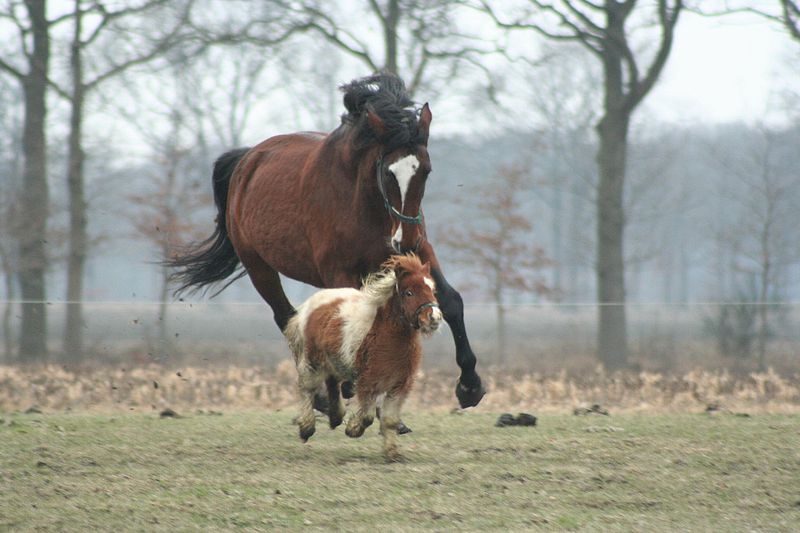Gait expectations: genetic basis of horse dressage and mammalian movements
A gene responsible for affecting how the majority of mammals move has been revealed by studying a group of Icelandic horses with weird walking  patterns.
patterns.
Although all horses can walk, trot and gallop, some breeds are also capable of other gaits such as the fast, running walk characteristically displayed by the animals used in harness horse racing.
Since these traits appear to be unique to specific breeds, Uppsala scientist Lisa Andersson and her colleagues set out to uncover the genetic basis of these behaviours.
The Swedish team, writing in Nature, compared the genomes of 30 Icelandic horses capable of four different gait patterns - walk, trot, gallop and an ambling step called "tolt" - with 40 animals showing 5 different gaits - walk, trot, tolt, gallop and "pace", which is like a trot except the animal can move both legs on the same side of the body simultaneously.
The analysis revealed a hotspot on one region of horse chromosome 23, which the scientists then narrowed down using genetic sequencing to a gene called DMRT3. Animals capable of "pace" stepping, they found, carried a change in this gene, and examination of other horse breeds reared for fast non-gallop running also showed that many carry this genetic change.
In mice, the team found, the DMRT3 gene is expressed in the spinal cord in a population of specialised nerve cells called interneurones, in which it controls how these cells link motor nerves together to produce coordinated movement patterns between the left and right and fore- and hindlimbs.
Predictably, knocking out the gene produced mice with abnormal gait patterns themselves.
In the wild, few horses would naturally have the DMRT3 mutation because its effect on locomotion is to slow the animals down, turning them into a ready-meal for a predator.
But human horse-breeders, back in history, must have spotted the potential of some horses that walked a little weirdly and chosen to breed from them, hoping to benefit from the smoother ride that these extra, albeit slower, forms of movement can provide, boosting the gene pool into the bargain..










Comments
Add a comment